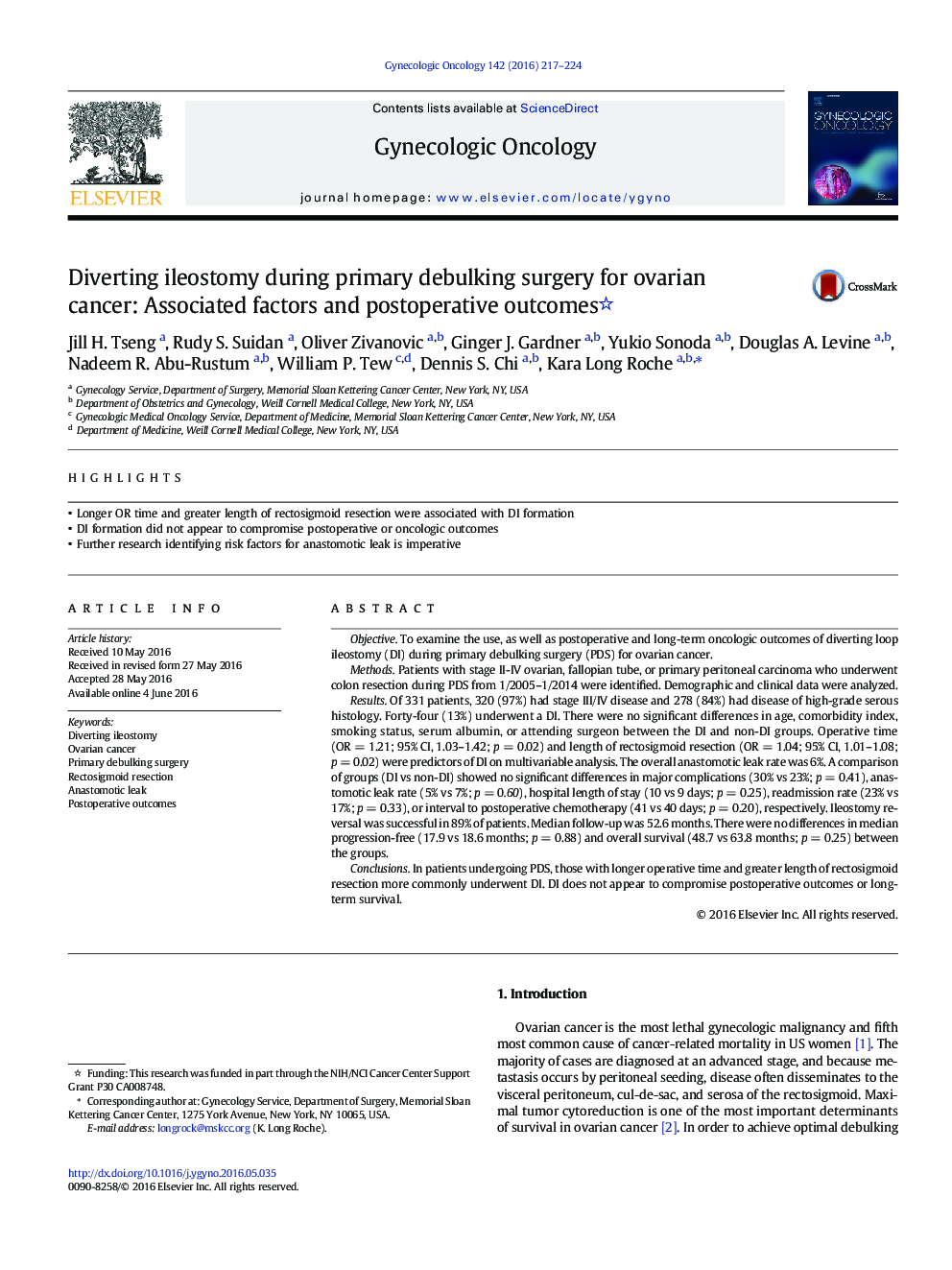| کد مقاله | کد نشریه | سال انتشار | مقاله انگلیسی | نسخه تمام متن |
|---|---|---|---|---|
| 3946345 | 1254336 | 2016 | 8 صفحه PDF | دانلود رایگان |

• Longer OR time and greater length of rectosigmoid resection were associated with DI formation
• DI formation did not appear to compromise postoperative or oncologic outcomes
• Further research identifying risk factors for anastomotic leak is imperative
ObjectiveTo examine the use, as well as postoperative and long-term oncologic outcomes of diverting loop ileostomy (DI) during primary debulking surgery (PDS) for ovarian cancer.MethodsPatients with stage II-IV ovarian, fallopian tube, or primary peritoneal carcinoma who underwent colon resection during PDS from 1/2005–1/2014 were identified. Demographic and clinical data were analyzed.ResultsOf 331 patients, 320 (97%) had stage III/IV disease and 278 (84%) had disease of high-grade serous histology. Forty-four (13%) underwent a DI. There were no significant differences in age, comorbidity index, smoking status, serum albumin, or attending surgeon between the DI and non-DI groups. Operative time (OR = 1.21; 95% CI, 1.03–1.42; p = 0.02) and length of rectosigmoid resection (OR = 1.04; 95% CI, 1.01–1.08; p = 0.02) were predictors of DI on multivariable analysis. The overall anastomotic leak rate was 6%. A comparison of groups (DI vs non-DI) showed no significant differences in major complications (30% vs 23%; p = 0.41), anastomotic leak rate (5% vs 7%; p = 0.60), hospital length of stay (10 vs 9 days; p = 0.25), readmission rate (23% vs 17%; p = 0.33), or interval to postoperative chemotherapy (41 vs 40 days; p = 0.20), respectively. Ileostomy reversal was successful in 89% of patients. Median follow-up was 52.6 months. There were no differences in median progression-free (17.9 vs 18.6 months; p = 0.88) and overall survival (48.7 vs 63.8 months; p = 0.25) between the groups.ConclusionsIn patients undergoing PDS, those with longer operative time and greater length of rectosigmoid resection more commonly underwent DI. DI does not appear to compromise postoperative outcomes or long-term survival.
Journal: Gynecologic Oncology - Volume 142, Issue 2, August 2016, Pages 217–224